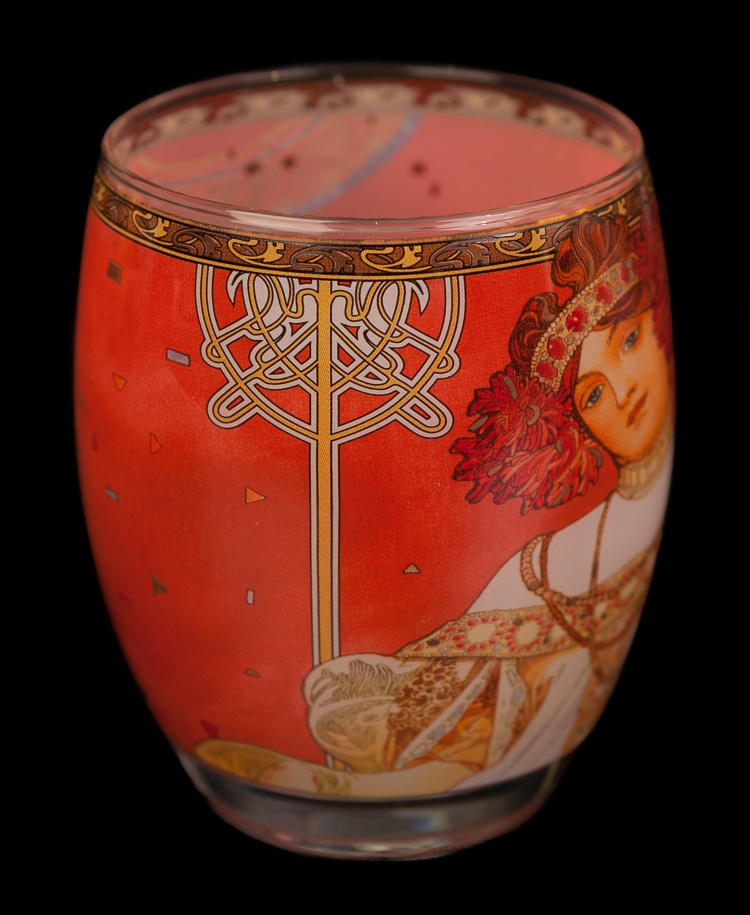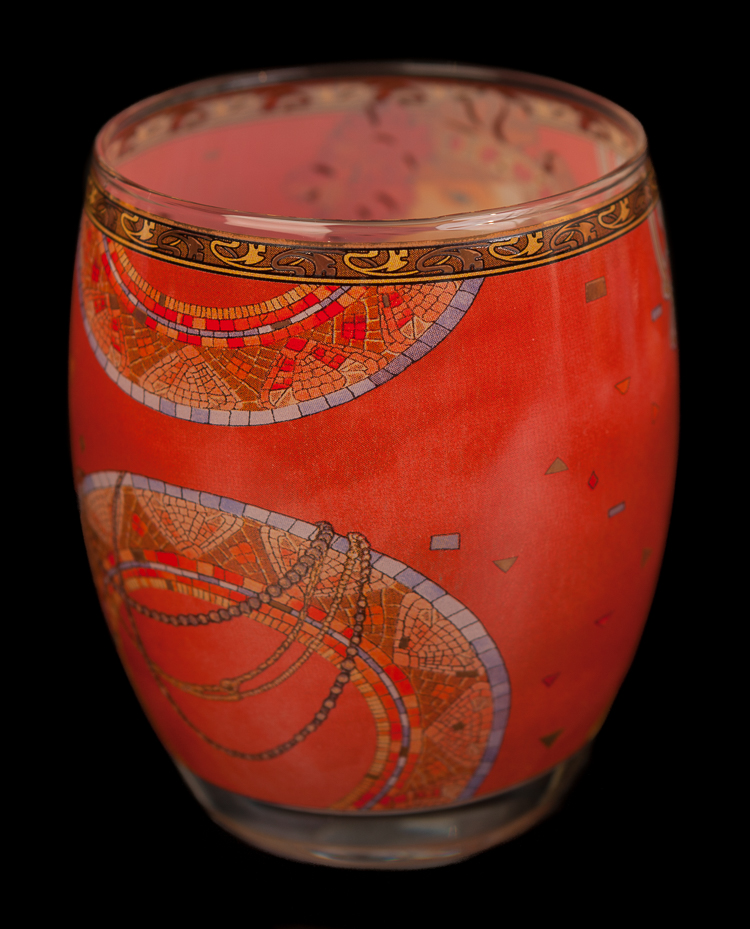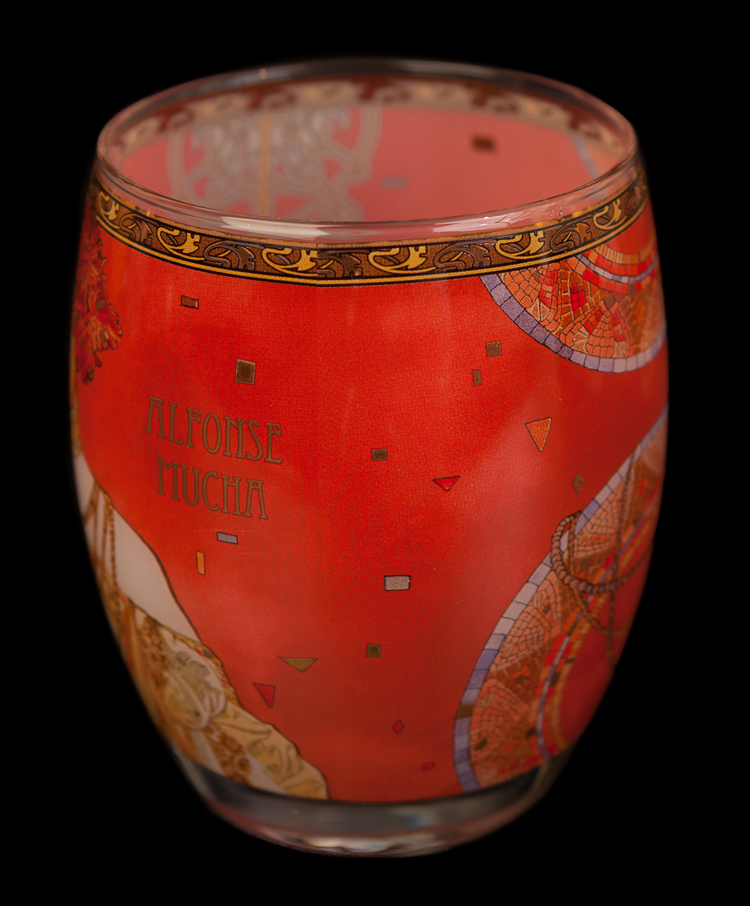Tel : (+33) 4 94 63 18 08
9am - 6pm from Monday to Sunday
All products Alfons Mucha • Products of the topic Candle holders
MUCHA Tealight Holder or glass : Fall
REF : MUCHA-GOEB-15
In stock
Only 1 in stock
Unavailable
29,90 €
Glasses for water or candle jar, both uses are possible.
H : 10 cm
Ø : 8.5 cm
We are experienced in shipping fragile items worldwide.
Our shipping charges include insurance.
We guarantee delivery in good condition.
Discover the artist's categories
Alfons Mucha
Additional cultural and artistic information about the artist
* * *
Main works
Zodiac, The Seasons, The Hours of the Day, The Arts, The Slavic Epic.
Artistic movements
Art Nouveau
Inspiration, influence
It is the theater, its universe, its sets, which guided his steps as a painter. He wants to be a creator of ambiance, much more than a painter at the beginning of his career.
His contemporaries
The vibrant Paris of 1890/1910. He rubbed shoulders with both Sarah Bernhardt, for whom he created posters and stage sets, and Paul Gauguin, who was one of his friends (and models).
To keep in mind
Genius poster artist, his talent and style are forever linked to the Paris of the transition between the 19th and 20th centuries.
To go further
In 1901, Mucha designed the facade and decoration of the Fouquet Jewelery Store in his Art Nouveau style. The entire decor is now visible at the Carnavalet Museum where the place has been fully reconstructed.
Biography of Alfons Mucha
Alfons Mucha
Alphonse Marie MUCHA was born in Czechoslovakia (region of Moravia) in 1860.
It was Count Khuen-Bellassi (his future patron) who noticed him in Vienna in 1883. He entrusted him with the decoration of his castles in Emmahof and Gandegg, and financed his studies at the Académie Julian in Paris, where the Czech artist befriended the "Nabis" painters.
But it was his encounter with the tragedienne Sarah Bernhardt, in December 1894, for whom he designed the poster for the drama she performed, "Gismonde", that established his style and greatly and durably influenced French Art Nouveau.
From the following year, the biggest brands of the time all sought MUCHA's services to depict their flagship products: LU biscuits, JOB cigarette papers, and MOËT & CHANDON champagnes.
While he continued to work closely with Sarah Bernhardt, he participated in numerous Salons and Exhibitions, notably alongside other great poster artists of the time: Steinlen and Toulouse-Lautrec.
From 1910 onwards, he returned more and more frequently to his native country, to settle there permanently in the 1920s, where he began the work of his life: the execution of twenty gigantic paintings on the History of the Slavs.
Arrested by the Gestapo after the annexation of Czechoslovakia by Nazi Germany, he was released for health reasons but died on July 14, 1939, in Prague, on his 79th birthday.
(c) Natacha PELLETIER for PASSION ESTAMPES






























